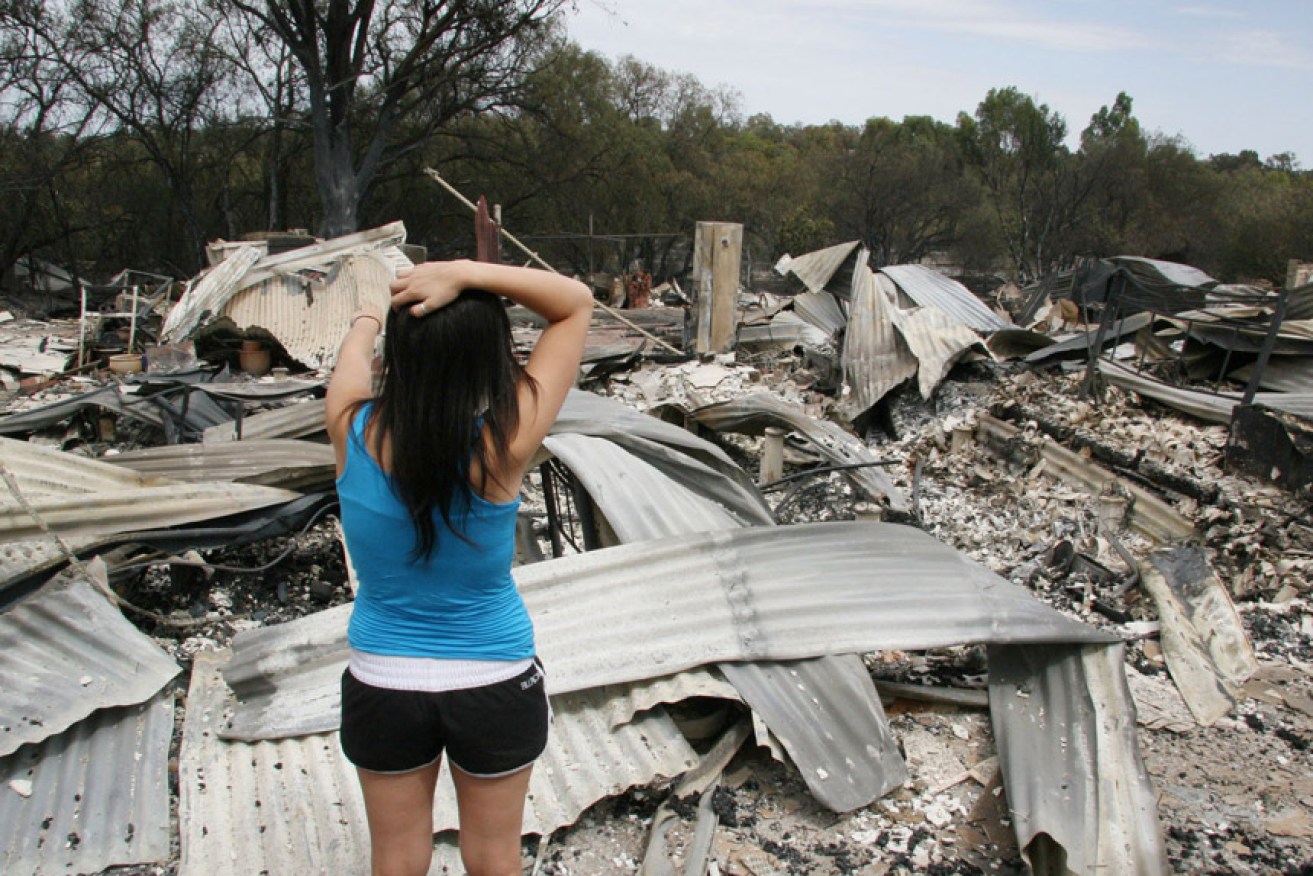The ins and outs of the Black Saturday settlement


More than 10,000 individual claims were registered as part of the class action. Photo: AAP.
A lawyer working on the Black Saturday bushfire class action says he feels a “great deal of pride and relief” after helping to secure a $500 million settlement for victims on Tuesday.
For the past 16 months, Maurice Blackburn lawyers have been fighting in court on behalf of 5,000 people affected by the Kilmore East-Kinglake fire which killed 119 people.
• Black Sat payout to help victims
• $500m Black Saturday payout
The action was brought against power distributor SP AusNet and asset manager Utility Services Group after a royal commission found an ageing SP AusNet power line sparked the 2009 fire.
SP AusNet will pay $378.6 million, Utility Services Corporation will pay $12.5 million, and the Victorian government will pay $103.6 million.
“Hard fought” case
Maurice Blackburn senior associate Rory Walsh says the case, which is the the biggest class action settlement in Australian history, was “very, very long, hard-fought”.
“We ran a claim against three incredibly well resourced defendants who had enormous resources, who had the ability to employ an army of lawyers against us, and who showed a willingness to fight for five years without giving an inch until we got them to a point where they offered us half a billion dollars,” Mr Walsh says.

Maurice Blackburn lawyer Rory Walsh is proud of the outcome.
“We always believed in our case, but it took a long time to get here so we’re feeling a great deal of pride and relief.”
What happens now?
Teams of barristers, psychologists, psychiatrists and property loss assessors will now begin working around the clock to assess the scale of loss of each of the 10,000 claims.
“Some people are moderately injured and some people are catastrophically injured. Right at the end of the scale, we’ve got people who were horrifically burnt and aren’t able to work and require lifelong care,” Mr Walsh says.
It is expected to take the teams about 18 months to assess all of the claims before the 5,000 people involved in the class action can receive their settlement.
“You assess their losses individually and then at the end of the matter, when you’ve assessed everybody’s loses, you work out what proportion they will be able to recover.”
Class actions defined
Mr Walsh says it’s only through group proceedings like class actions that people are able to match the resources of the well resourced defendants like SP AusNet that they were taking on.
With Maurice Blackburn’s fees for the case expected to come in at $60 million, individual Black Saturday bushfire victims would not have been able to finance personal claims.
“The class action regime provides a vehicle whereby you can represent all of those people who individually would not have the resources to take on the defendants,” Mr Walsh says.

Lead plaintiff Carol Matthews said she was relieved after the settlement
“It is only through group proceedings, class actions like this, that you’re able to represent people like that and match the resources that they’ve got and match them head on.”
Lead plaintiff “courageous”
Lead plaintiff Carol Matthews fronted the challenge against SP AusNet, Utility Services Group and the Victorian government after losing her son and home in the fires.
Mr Walsh says lead plaintiffs must represent the overall claims of the group – in this case personal injury and property loss – and be incredibly courageous.
“The other thing about a lead plaintiff you need to understand is that if we lost this case, the lead plaintiff would be responsible for the defendant’s legal costs,” he says.
“A woman who had lost everything, including her son and her house… if we lost this case, she would have been wiped out financially multiple times over. You need someone incredibly courageous to do that.”
Why a class action instead of an insurance payout?
Most people weren’t insured for the injuries they sustained, or were not properly insured for the damage to their homes, making the class action an attractive option.
“There was significant loses beyond that which people had insured against which made this viable and a worthwhile process for people to come into,” Mr Walsh explains.
“Most people have no insurance at all for personal injury loses.”
The average person in the sample group were also only insured for 50 per cent of their property losses.
“The fact that we got 5,000 people who brought 10,000 claims showed us that there was a very, very significant appetite for this claim and a real interest in this claim and a real need for it.”








